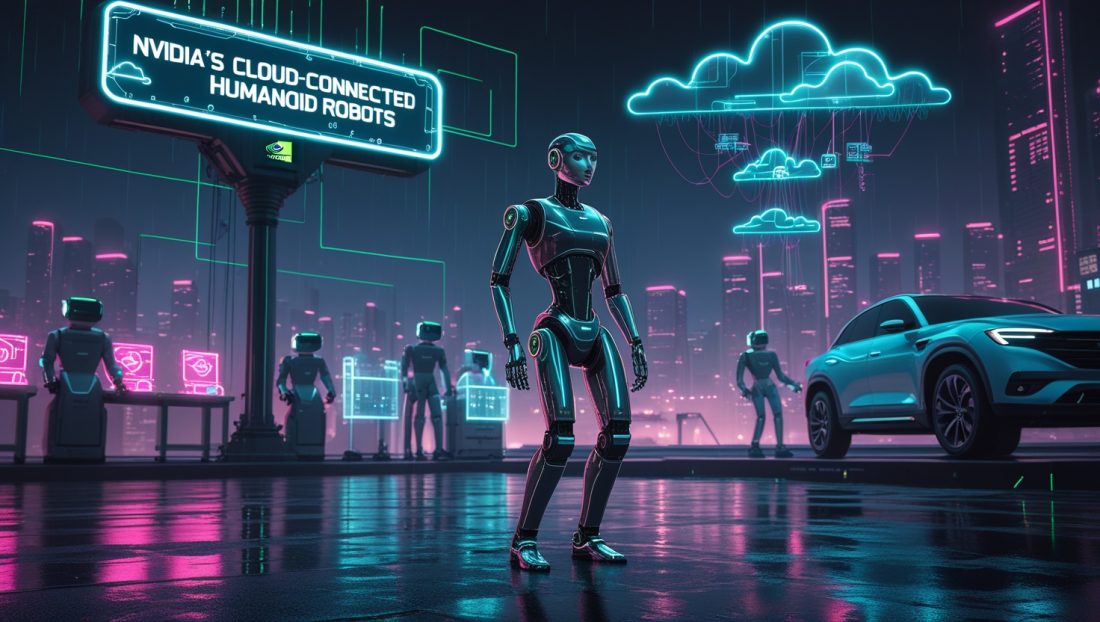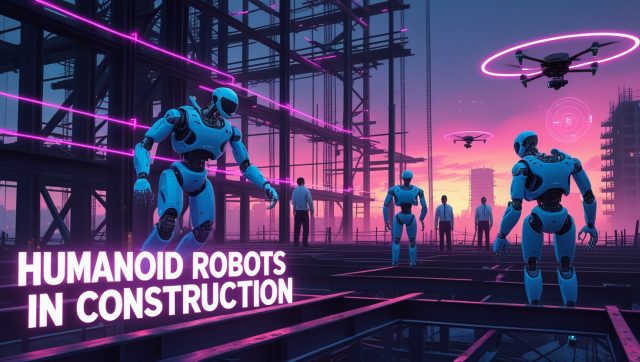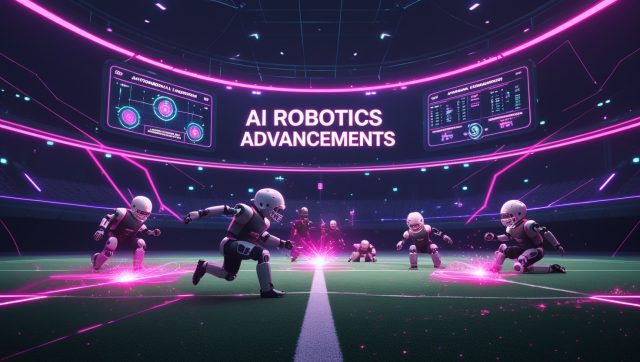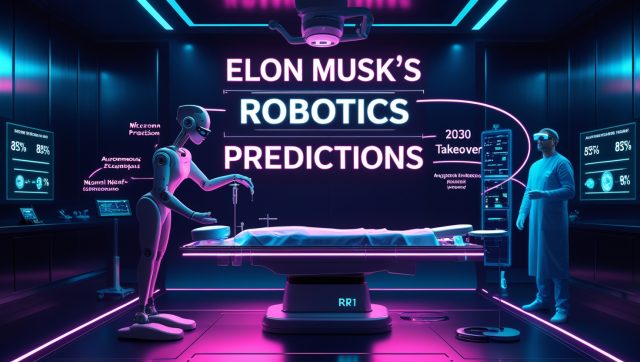Can robots think, move, and work like humans, powered by the cloud? Nvidia is betting on it. At Computex 2025, the tech giant unveiled its vision for cloud-connected humanoid robots, a bold step toward merging AI with physical automation. This move could redefine IT, manufacturing, and logistics by 2025, but it’s not without risks. Why is Nvidia diving into this space, and what does it mean for the future?
We will be exploring Nvidia’s strategy, the technology driving cloud-connected humanoid robots, their potential to transform industries, and the challenges ahead. With insights from experts, a fictional anecdote for context, and answers to common questions, we’ll uncover why this technology is a game-changer—and where it might stumble.
Nvidia’s Vision for Cloud-Connected Humanoid Robots
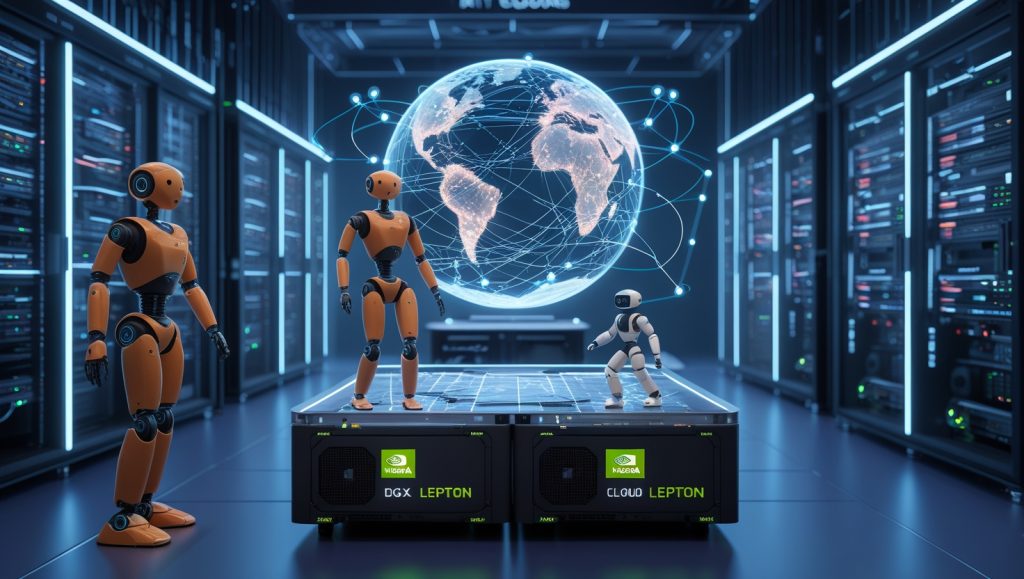
Nvidia’s Computex 2025 keynote in Taipei showcased its Isaac GR00T N1.5, a foundation model for training humanoid robots to reason and move like humans. Unlike traditional robots, which follow rigid programming, cloud-connected humanoid robots use Nvidia’s advancements in physical AI robotics to process tasks remotely via DGX Cloud Lepton and Universal Blackwell Systems, powered by RTX PRO 6000 GPUs.
Jensen Huang, Nvidia’s CEO, emphasized the potential: “Physical AI and robotics will bring about the next industrial revolution,” he said at Computex 2025. Nvidia’s partnerships with Foxconn, CoreWeave, and SoftBank are building a global GPU cloud network to support this vision, making advanced robotics accessible worldwide.
The technology relies on Nvidia’s Omniverse platform and Cosmos AI models, which simulate real-world physics. A post on X noted that Nvidia trained robots to walk like humans in just two hours of simulation, a leap in physical AI robotics. This efficiency could transform industries facing labor shortages, like manufacturing, where 650,000 U.S. jobs went unfilled in 2024, per the Bureau of Labor Statistics.
Why Cloud-Connected Humanoid Robots Matter
Addressing Labor Shortages
Cloud-connected humanoid robots can tackle repetitive, physically demanding tasks, easing labor shortages. For example, Boston Dynamics’ Atlas, set to join Hyundai’s U.S. factories in 2025, can sort parts and lift heavy loads, reducing workplace injuries. Nvidia’s CEO, Jensen Huang, predicts humanoid robots in manufacturing will see wide use within five years, highlighting their value in controlled environments like factories.
Scaling AI Access
Nvidia’s cloud-based approach makes AI-driven automation affordable for smaller businesses. By offloading processing to the cloud, companies can deploy robots without investing in costly on-device hardware. This mirrors trends in AI-driven grocery automation, where cloud solutions streamline operations. Nvidia’s DGX Cloud Lepton lets a small warehouse tap the same computing power as a tech giant.
Economic Potential
Economist Anton Korinek projects that AGI-powered robots could drive 20% annual economic growth by performing any human task. The humanoid robot market is expected to reach $38 billion by 2035, with Nvidia poised to lead. Competitors like Tesla and Google DeepMind are in the race, but Nvidia’s cloud infrastructure gives it an edge.
A Fictional Anecdote: A Glimpse of the Future
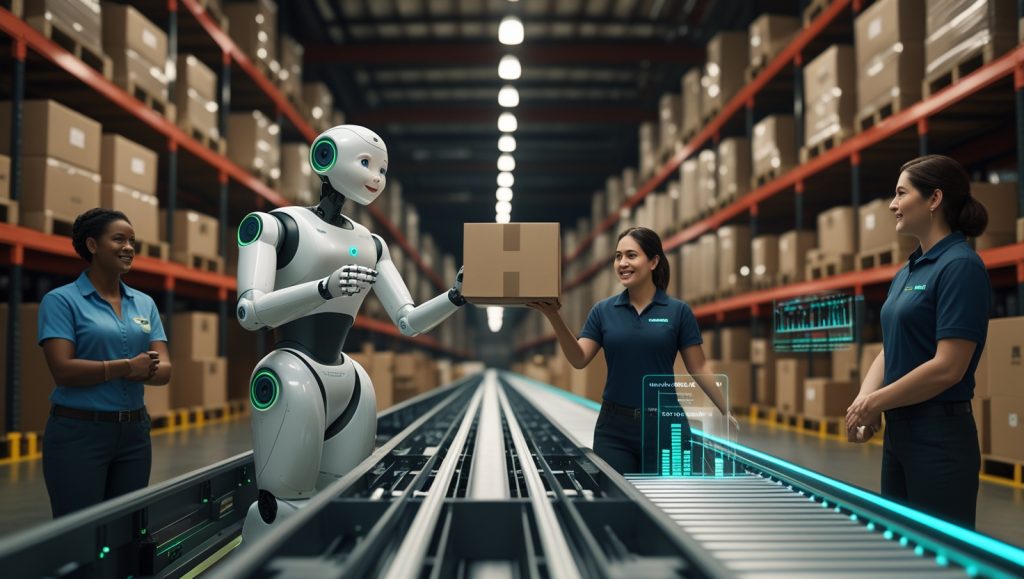
Note: This scenario is fictional to illustrate potential applications.
In a Chicago logistics hub, manager Sarah oversees a struggling warehouse. Staff shortages delay shipments, and morale is low. Enter Aria, a cloud-connected humanoid robot powered by Nvidia’s Isaac GR00T. Within hours, Aria learns to sort packages and assist workers, boosting output. Sarah is impressed but wonders if Aria will outshine her team. This scenario highlights how humanoid robot training can enhance productivity while raising questions about human roles.
Why Challenges Persist for Cloud-Connected Humanoid Robots
Technical Limitations
Training robots for unpredictable environments, like homes or busy factories, is tough. At Beijing’s E-Town Humanoid Robot Half-Marathon in April 2025, only six of 21 robots finished the 21-km course. The fastest, Tiangong Ultra, took 2 hours and 40 minutes, needing three battery swaps and falling once. Alan Fern, a robotics professor at Oregon State University, told WIRED, “AI for humanoids hasn’t progressed much since 2021”. Nvidia’s simulation training aims to address this, but real-world reliability lags.
Ethical and Social Risks
Job displacement is a concern. A Beijing official claimed robots won’t fully replace workers, but public skepticism persists. Our analysis of autonomous police robots highlights similar fears. Safety is another issue—strong robots could pose risks if they malfunction, as noted by the BBC. Nvidia must prioritize robust safety protocols.
Geopolitical Hurdles
U.S.-China trade tensions, including AI chip export controls, could disrupt Nvidia’s supply chain. Tesla’s Optimus faced delays in 2025 due to rare-earth metal restrictions. Nvidia’s partnerships with TSMC and Foxconn aim to navigate these challenges, but global volatility remains a risk.
Why Nvidia’s Approach Stands Out
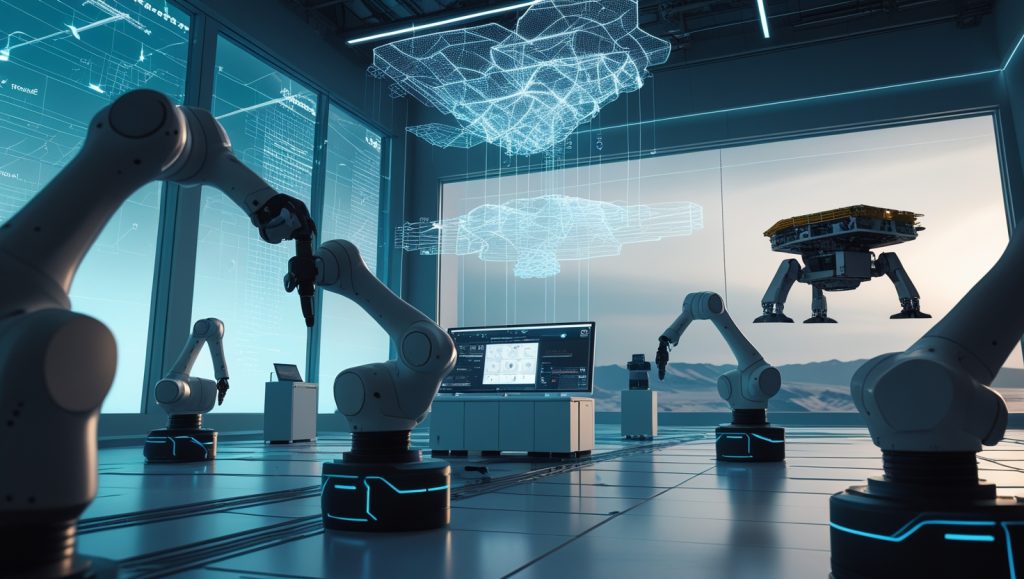
Nvidia’s strength lies in its cloud-to-robot integration. The Isaac GR00T platform uses hierarchical vision-language-action models, enabling robots to apply simulated skills to real tasks. This efficiency, requiring just 1.5 million parameters, sets Nvidia apart. Collaborations with KUKA and Universal Robots, showcased at Automate 2025, integrate Nvidia’s Jetson for AI-ready applications. Unlike competitors focused on digital AI, Nvidia’s push into physical AI robotics aligns with trends in space robotics.
FAQ: Cloud-Connected Humanoid Robots
How much do these robots cost?
Industrial models range from $100,000 to $500,000, but Nvidia’s cloud approach reduces hardware costs.
Are they safe to work with?
Nvidia’s training includes collision avoidance, but real-world mishaps, like those in Beijing, highlight ongoing risks.
Can small businesses use them?
Yes, Nvidia’s DGX Cloud makes cloud-connected humanoid robots accessible by offloading processing.
Will they replace jobs?
They’re meant to complement workers, handling repetitive tasks, but concerns about job losses remain.
What’s Next for Nvidia’s Cloud-Connected Humanoid Robots?
Nvidia’s push into cloud-connected humanoid robots signals a shift toward AI-driven physical automation. By addressing labor shortages and scaling AI access, Nvidia could lead a $38 billion market by 2035. Yet, technical, ethical, and geopolitical challenges loom. For more on AI’s impact, read our take on AI-driven scientific discovery.
CTA: Curious about the robotics revolution? Subscribe to Our Newsletter for the latest on AI and IT trends. Share your thoughts below—will Nvidia’s bet pay off?
